Cellulose – Bioplastics – Batteries 16-12-202 - Arhive
Cellulose – Bioplastics – Batteries
Crude Oil Prices Trend
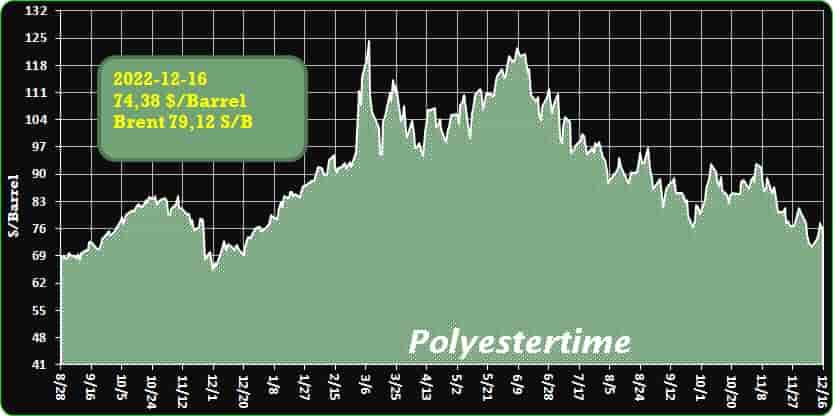
Crude Oil Prices Trend Polyestertime
-Bio-Based Plastics Aim to Capture Carbon. But at What Cost?
Growing crops to make plastic could theoretically reduce reliance on fossil fuels and even pull carbon out of the atmosphere, but at an enormous environmental cost.
IT’S THE YEAR 2050, and humanity has made huge progress in decarbonizing. That’s thanks in large part to the negligible price of solar and wind power, which was cratering even back in 2022. Yet the fossil fuel industry hasn’t just doubled down on making plastics from oil and gas—instead, as the World Economic Forum warned would happen, it has tripled production from 2016 levels. In 2050, humans are churning out trillions of pounds of plastic a year, and in the process emitting the greenhouse gas equivalent of over 600 coal-fired power plants. Three decades from now, we’ve stopped using so much oil and gas as fuel, yet way more of them as plastic.
Back here in 2022, people are trying to head off that nightmare scenario with a much-hyped concept called “bio-based plastics.” The backbones of traditional plastics are chains of carbon derived from fossil fuels. Bioplastics instead use carbon extracted from crops like corn or sugarcane, which is then mixed with other chemicals, like plasticizers, found in traditional plastics. Growing those plants pulls carbon out of the atmosphere, and locks it inside the bioplastic—if it is used for a permanent purpose, like building materials, rather than single-use cups and bags.
At least, that’s the theory. In reality, bio-based plastics are problematic for a variety of reasons. It would take an astounding amount of land and water to grow enough plants to replace traditional plastics—plus energy is needed to produce and ship it all. Bioplastics can be loaded with the same toxic additives that make a plastic plastic, and still splinter into micro-sized bits that corrupt the land, sea, and air. And switching to bioplastics could give the industry an excuse to keep producing exponentially more polymers under the guise of “eco-friendliness,” when scientists and environmentalists agree that the only way to stop the crisis is to just stop producing so much damn plastic, whatever its source of carbon.
But let’s say there was a large-scale shift to bioplastics—what would that mean for future emissions? That’s what a new paper in the journal Nature set out to estimate, finding that if a slew of variables were to align—and that’s a very theoretical if—bioplastics could go carbon-negative.
The modeling considered four scenarios for how plastics production—and the life cycle of those products—might unfold through the year 2100, modeling even further out than those earlier predictions about production through 2050. The first scenario is a baseline, in which business continues as usual. The second adds a tax on CO2 emissions, which would make it more expensive to produce fossil-fuel plastics, encouraging a shift toward bio-based plastics and reducing emissions through the end of the century. (It would also incentivize using more renewable energy to produce plastic.) The third assumes the development of a more circular economy for plastics, making them more easily reused or recycled, reducing both emissions and demand. And the last scenario imagines a circular bio-economy, in which much more plastic has its roots in plants, and is used over and over.
“Here, we combine all of these: We have the CO2 price in place, we have circular economy strategies, but additionally we kind of push more biomass into the sector by giving it a certain subsidy,” says the study’s lead author, Paul Stegmann, who’s now at the Netherlands Organization for Applied Scientific Research but did the work while at Utrecht University, in cooperation with PBL Netherlands Environmental Assessment Agency. If all three conditions are met, he says, it is enough to push emissions into the negative.
In this version of the future, people would still have to grow lots of crops to make bioplastics, but those plastics would be used—and reused—many times. “You basically put it into the system and keep it as long as possible,” says Stegmann.
To be clear, this is a hypothetical scenario, not a prediction for where the plastics industry is actually headed. Many pieces would have to fall together in just the right way for it to work. For one, Stegmann and his colleagues note in their paper, “a fully circular plastics sector will be impossible as long as plastic demand keeps growing.”
Plastics companies will happily meet that demand by ramping up production, says Steven Feit, senior attorney at the Center for International Environmental Law, which did the emissions report showing what would happen if plastics manufacturing grew through the year 2050. “The pivot to petrochemicals has been the plan for years now for the broader fossil fuel industry,” he says. “It’s understood that plastics, as well as nitrogen fertilizers, are the two real pillars of petrochemicals, which are the engine of growth for fossil fuels.”
And as long as the plastics industry keeps producing exponentially more of it, there’s no incentive to keep the stuff in circulation. It’s just so cheap to manufacture, which is why recycling straight-up doesn’t work in its current form. (Among the many reasons why scientists are calling for negotiators of a new treaty to add a cap on production is that it would increase the price and demand for recycled plastic.) Another wrinkle is that plastic can only be recycled once or twice before it becomes too degraded. Some products, like multilayered pouches, have become increasingly complicated to recycle, so wealthy nations have been shipping them all to economically developing countries to deal with. Which is about as far from a circular economy as you can get.
Another issue is the space needed to grow the feedstock crops. “It increases the already huge pressure on land use,” says Jānis Brizga, an environmental economist at the University of Latvia, who studies bio-based plastics but wasn’t involved in the new paper. “Land use change has been one of the main drivers for biodiversity loss—we’re just pushing out all the other species.”
In 2020, Brizga published a paper calculating how much land it would take to grow enough plants for bioplastics to replace all the traditional plastics used in packaging. The answer: At a minimum, an area bigger than France, requiring 60 percent more water than the European Union’s annual freshwater withdrawal. (The new paper didn’t consider land use or water, but Stegmann says that could be an avenue for future research.)
It would also take a whole lot of chemicals to keep those plants healthy. “Many of these crops are produced in intensive agricultural systems that use a lot of pesticides and herbicides and synthetic chemicals,” Brizga says. “Most of them are also very, very dependent on fossil fuels.”
And from a human health perspective, we don’t even want to keep plastics circulating around us. A growing body of evidence links their component chemicals to health problems: One study linked phthalates (a plasticizer chemical) to 100,000 early deaths each year in the US, and the researchers were being conservative with that estimate. Microplastics are showing up in people’s blood, breast milk, lungs, guts, and even newborns’ first feces, because we’re absolutely surrounded by plastic products—clothing, carpeting, couches, bottles, bags.
It’s also not clear what kind of climate effect the plastics will have after they’re produced. Early research on microplastics suggests that they release significant amounts of methane—an extremely potent greenhouse gas—as they break down in the environment. Even if a circular bioplastics economy attempts to keep carbon and methane locked up by turning plastics into long-term building materials or landfilling whatever can’t be used again, nobody knows for sure if it will work. We need more research on how plastics off-gas their carbon under different conditions.
The more plastic we produce, the more corrupted the environment grows—it’s already poisoning organisms and destabilizing ecosystems. “I fear that by the time we get enough answers to all of our questions, it will be too late,” says Kim Warner, senior scientist at the advocacy group Oceana, who wasn’t involved in the new paper.
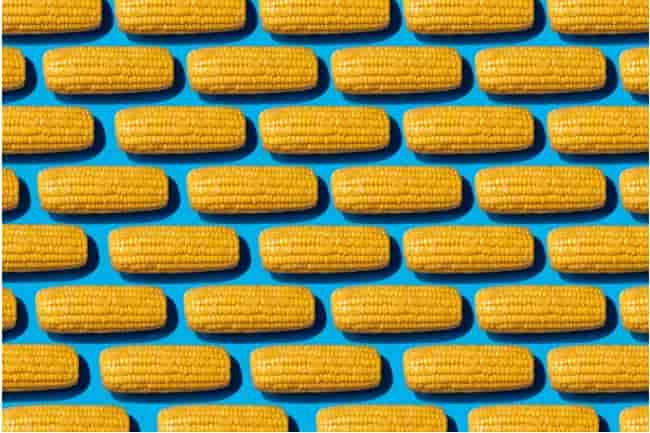
-Researchers Achieve High Thermal Conductivity in Cellulose Materials
Nanocellulose is a renewable and environmentally friendly material that has been the subject of increasing interest in the scientific community. Nanocellulose materials have traditionally been utilized for their outstanding heat insulation qualities. However, cellulose nanofibrils can demonstrate strong heat conductivity when they are aligned and linked in the form of filaments, broadening the scope of their applications.
An Introduction to Cellulose
Cellulose is by far the most common biopolymer on the planet, and it is well known for its renewable, biocompatible, and biodegradable nature.
Cellulose is a type of linear polysaccharide (β (1−4) linked d-glucose units) that is often present as a structural element in plant and algal cell walls or in the biofilm secretions of certain bacterial species. Cellulose – Bioplastics – Batteries
Secondary bonds among polymeric chains (hydrogen bonding and van der Waals forces) encourage parallel stacks and the subsequent production of nanofibrils which have diameters ranging from 5 to 50 nm and include amorphous and crystalline areas.
Cellulose nanofibrils (CNFs) are environmentally friendly nanomaterials that have various benefits, including great mechanical qualities, light weight, and good stiffness, strength, and flexibility.
Cellulose nanofibrils are therefore ideal for the production of bio-based aerogels for thermally insulating the walls and roof cavities of buildings. These aerogels generally exhibit high strength and Young’s modulus, moderate light penetrability, and excellent heat insulation qualities.
Approaches for Enhancing Thermal Conductivity of Polymers
Composites have frequently been employed to improve the thermal conductivity of polymers. In this approach, additives like carbon nanotubes or metal nanoparticles are inserted in the polymeric matrices.
The problem with this method is that the thermal interface resistance between the polymeric matrix and the additives restricts the increase in thermal conductance to a single order of magnitude. Cellulose – Bioplastics – Batteries
In contrast, polymer chain alignment may significantly improve the thermal conductivity and mechanical strength of polymers.
Can Nanocellulose Materials Act as Heat Conductors?
The molecules of cellulose tend to form polymeric chains, which endow nanocellulose materials with properties that could make them good thermal conductors. Recent research on other polymeric chains has indicated that improving their crystallinity and molecular alignment can significantly boost their thermal conductivity.
These findings have sparked efforts to improve the heat conduction of cellulose-based materials by increasing the alignment of nanofibrils.
The Anatomy of Cellulose Fibers
Nanofibrils are the major components of cellulose fibers and have the potential to be the foundations for high-performance biomaterials and fabrics, as well as a benchmark for functional nanomaterials.
The nanofibrils in cellulose fibers are structured in a nanosized lamellar structure with a highly organized spiraling configuration along the axis of the fiber. The fibers exhibit high values of ultimate strength and stiffness, which vary based on the mean fibril orientation.
Individual fibrils or fibril bundles (termed cellulose nanofibrils) may be formed from cellulose fibers.
The inferior characteristics exhibited by CNF filaments and films in existing literature have indicated that the fibrils must be aligned and arranged in a regulated manner to fully unlock the potential of CNF.
The Effect of Hydrodynamic Focusing on Cellulose Nanofibrils
In a study published in the journal Nano Letters, researchers employed a hydrodynamic focusing technique to improve the crystallinity and alignment of individual component cellulose nanofibrils and harness their complete thermal conductivity potential.
In a singular filament of cellulose, a record-high thermal conductivity of 14.5 W/m-K was recorded. These cellulose filaments outperformed thin films of cellulose as well as other pure cellulose nanomaterials in terms of thermal conductivity.
The morphology of the cellulose filaments was studied using Raman spectroscopy to identify the structural elements behind the reported increase in heat conductivity.
They discovered that the cellulose filaments that showed high thermal conductivity also exhibited high crystallinity, which was induced by the alignment and ion-induced gelation of the cellulose nanofibrils during the flow-focusing procedure.
Extensional and shear flows aligned the cellulose nanofibrils and caused ionic bonding during the flow-focusing process. Cellulose – Bioplastics – Batteries
The results of their study showed that changing the surface activity of cellulose molecules may result in materials with increased crystallinity and, therefore, thermal conductivity.
Factors Affecting the Thermal Conductivity of Cellulose Nanofibrils
When the gelation crystals are irregularly distributed across two or more areas during cellulose crystallization, residual stresses are predicted to occur inside the cellulose nanofibrils. The presence of residual stress inside the filaments affects their crystallinity.
Residual stress produced during the gelation phase is a major cause of the reduction in crystallinity, which ultimately reduces the thermal conductivity of the CNFs.
Cellulose filaments having a smaller diameter and higher crystallinity are generally better thermal conductors because of greater hydrogen bonding between nanofibrils and less disorder within nanofibrils.
Cellulose Nanofibrils with High Thermal Conductivity
The researchers used a hydrodynamic flow-focusing channel mechanism to create a series of cellulose filaments. Cellulose – Bioplastics – Batteries
Their method enabled simultaneous adjustment of the crystallinity and alignment of cellulose nanofibrils in bulk filaments, which ultimately resulted in good thermal conductivity.
They achieved a thermal conductivity four to five times greater than that of other alternative cellulose-based materials, including nanofibers, filaments, and thin films.
The excellent thermal conductivity, low weight, remarkable mechanical qualities, flexibility, and renewable nature of the cellulose filaments highlight their potential for thermal management applications.
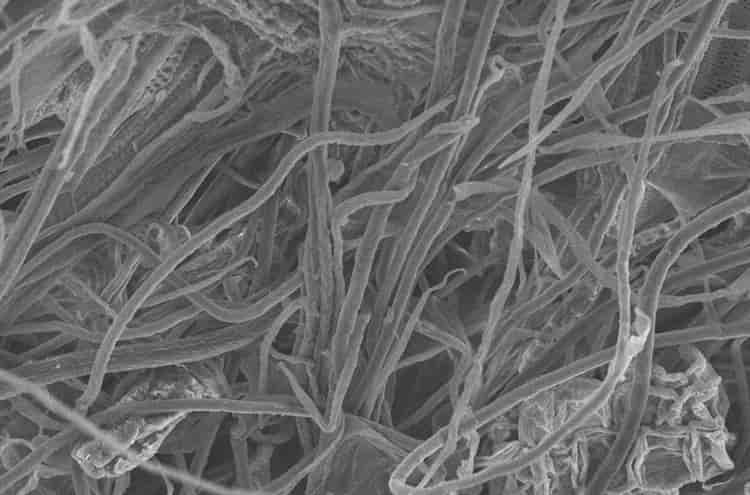
-Japan’s Mitsui eyes building $550m U.S. bioplastics plant
Bio-PET factory, one of world’s largest, would cut carbon emissions tied to drink bottles
Japanese trading house Mitsui & Co. will decide next year whether to build a bioplastics factory in the southeastern U.S., creating one of the largest production sites worldwide for the plant-based packaging material.
The proposed bio-PET plastics factory, with an annual capacity of 400,000 tonnes, could open in 2025. Investment is estimated at $550 million. Mitsui has signed a memorandum of understanding with U.S.-based chemical company Petron Scientech to explore a joint venture. Cellulose – Bioplastics – Batteries
Bio-PET, short for bio-based polyethylene terephthalate, is a plant-derived version of the plastic produced from fossil fuels and commonly used in drink bottles. Carbon dioxide emissions from the factory’s bio-PET plastic are expected to be 70% to 80% lower than from petroleum-derived plastic.
The Mitsui factory would procure bioethanol made from plants such as American corn and Brazilian sugar cane to produce the bio-PET plastic. Recycled bottles would be mixed into the plastic, which then would be sold to beverage makers as a container material.
Global bio-PET plastic production capacity now totals around 1 million tonnes, Mitsui said, a figure that would soar if the plant is built.
Beverage makers worldwide have set goals to reduce their environmental impact, such as by increasing the use of recycled materials in packaging, but that requires an infrastructure for collecting containers. Bio-PET can complement recycling.
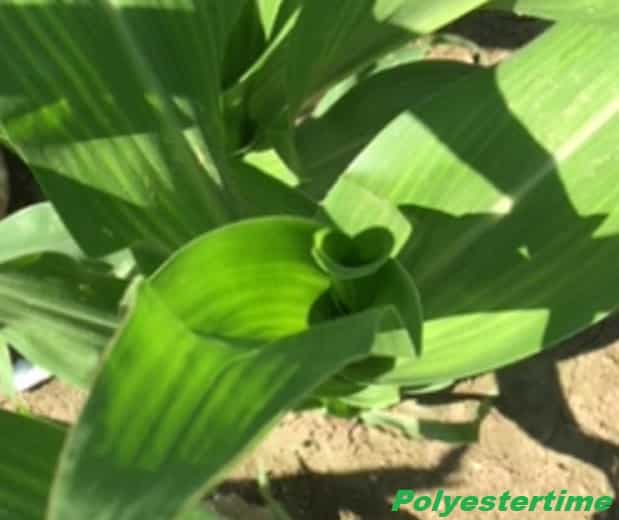
-ACE Green Recycling and Tabono to Form Battery Recycling Joint Venture
ACE Green Recycling (ACE) and Tabono Investments (Tabono) have signed a term sheet to form a joint venture to build and operate two environmentally sustainable battery recycling facilities in South Africa.
ACE Green Recycling (ACE) and Tabono Investments (Tabono) have signed a term sheet to form a joint venture to build and operate two environmentally sustainable battery recycling facilities in South Africa. Cellulose – Bioplastics – Batteries
Through the joint venture, the companies aim to bring radical change to the management of South Africa’s battery waste.
“Green energy is on the rise in South Africa and with it, battery usage,” said Liran Assness, Tabono co-founder.
Tabono’s other co-founder Reon Barnard added, “Without dedicated recycling facilities, the country is losing valuable materials like lithium and cobalt. We plan to take up this opportunity.”
The facilities will separately process and recycle lead-acid and lithium-ion batteries utilizing ACE’s proprietary technology that creates zero Scope 1 emissions by operating without fossil fuel-based heating.
Both recycling facilities will be greenfield projects to be developed and operated by the joint venture. Under the new structure, ACE will have 51 percent ownership and Tabono will own 49 percent.
“We are committed to ensuring emerging markets benefit from our clean battery recycling solutions,” said Nishchay Chadha, ACE CEO and co-founder. “Combining our expertise with Tabono will ensure development of safe and sustainable closed-loop solutions for battery materials within South Africa.”

-Coloreel Reports Thread Dyeing Technology Reduces Water Consumption By 97 Percent
Coloreel provides significant environmental benefits for the textile industry. The company’s sustainability operations are now quantified and third-party verified.
Coloreel uses one single white thread to create millions of colors and intricate patterns. It unlocks new design possibilities, while providing environmental benefits. By dyeing a 100-percent recycled polyester thread in real time, water consumption is reduced by at least 97 percent compared to traditional dyeing methods. In addition, the technology significantly reduces thread waste. Cellulose – Bioplastics – Batteries
“When Coloreel launched its ground-breaking t echnology for digital thread dyeing, the aim was to streamline an embroidery industry characterized by slow processes, difficulty in creating complicated designs and an excessive use of resources,” said Mattias Nordin, Sustainability manager at Coloreel.
The company has now published both a complete life cycle analysis (LCA) and an environmental product declaration (EPD) in the international database Environdec. Both documents are verified by a third party, the Swedish consulting company Miljögiraff.
50 times less wastewater
Through the documentation, a comparison can be made between Coloreel’s technology and one of the world’s leading thread manufacturers. Their public sustainability report shows that traditional thread dyeing produces 50 times more wastewater than Coloreel’s direct dyeing does.
“We have known for a long time that our technology gives a significant environmental advantage. Having it verified by an independent third party is of course important for our continued work. But for us, that’s not enough. We are currently focusing on further reducing the amount of energy and ink used in production,” Nordin said.
Coloreel’s environmental product declaration is available at environdec.com/library/epd4933

-SK Innovation and SungEel HiTech form battery-recycling joint venture
SK Innovation Ltd. (Seoul, South Korea) and SungEel HiTech signed a memorandum of understanding (MOU) to establish a joint venture for battery metal recycling to take lead in the market. This follows the announcement last year that Kia Motors would be collaborating with SK Innovation to establish a recycling ecosystem for electric vehicle batteries.
On December 13, the two companies decided to collaborate in a business of recovering lithium, nickel, cobalt, manganese, and other cathode materials from used batteries, and signed a memorandum of understanding (MOU) to establish a joint venture at SK Seorin Building in Jongno-gu, Seoul. The signing ceremony was attended by Head of SK Innovation’s Portfolio Divisional Group Kang Dong-soo, CEO of SungEel HiTech Yi Kang-myung, and representatives from both companies. Cellulose – Bioplastics – Batteries
The two companies plan to establish a domestic joint venture combining SK Innovation’s independently developed lithium hydroxide recovery technology and SungEel HiTech’s nickel, cobalt, and manganese recovery technology by 2023 and secure a differentiated competitive edge in the fast-growing market.
Since 2017, SK Innovation has been developing the technology to recover lithium from lithium-ion batteries in the form of lithium hydroxide. In December last year, the company built a scale-up pilot plant in SK Innovation Institute of Environmental Science & Technology located in Daejeon to test the feasibility of the technology’s commercialization. With this test as a foundation, the first commercial plant in Korea will be built in collaboration with SungEel HiTech, aimed to start operating by 2025.
The lithium hydroxide retrieved through SK Innovation’s technology is not only pure enough to be used in electric vehicle batteries but also known to have the highest recovery rates in the industry. Considering the current investment environment, SK Innovation will be building its first plant in Korea, and more plants will follow in the U.S. and Europe later.
SungEel HiTech is a specialized enterprise for recycling used secondary cells that garnered a fervent attention from investors during the initial public offering (IPO) last July. It is the only company in Korea to recover cobalt, nickel, manganese, and copper from lithium-ion batteries through a large-scale hydrometallurgical plant. In cooperation with SK Innovation, SungEel HiTech expects to generate additional profits by recovering lithium, which recently saw the biggest price increase among battery metals.
Recycling metals from used batteries is a crucial new business in implementing SK Innovation’s ‘Carbon to Green’ financial story and expanding its eco-friendly business portfolio,” said Kang Dong-soo, Head of SK Innovation’s Portfolio Divisional Group. “In cooperation with SungEel HiTech, we will build a circular economic model at a fast pace by recycling battery raw materials. Meanwhile, we will also respond flexibly to global regulations based on our differentiated competitive edge in recycling technologies.”
Yi Kang-myung, CEO of SungEel HiTech: “In line with the fast-growing electric vehicle market, we are pushing to strengthen our global leadership in eco-friendly technologies, upgrade the battery recycling technology, and expand the scale of our material production significantly. We will strengthen our lithium technology and become a global top-tier recycling company.” Cellulose – Bioplastics – Batteries
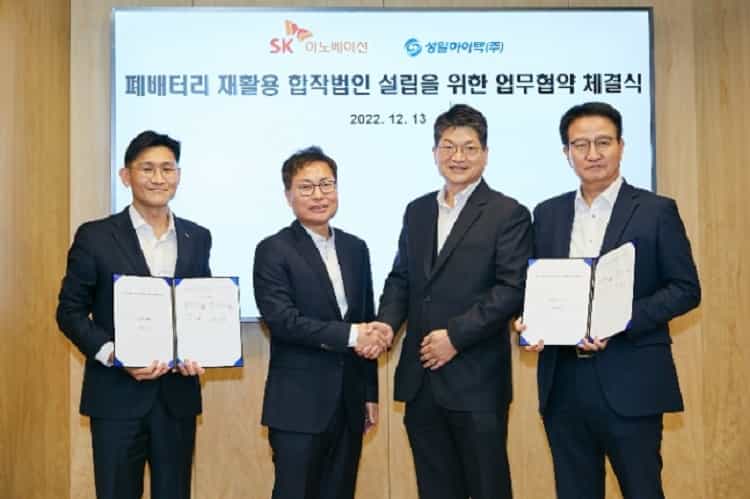 -ACI Plastics is approaching the finish line on its film line.
-ACI Plastics is approaching the finish line on its film line.
The Flint, Mich.-based reclaimer is less than a month away from commissioning an $8 million post-consumer polyethylene film recycling line, which includes sorting, washing, extrusion and pelletizing equipment.
The line will be able to recycle up to 24 million pounds of scrap per year, including stretch wrap, bags and other post-commercial materials, said Scott Melton, president of ACI. His company has the right people, feedstock and equipment to produce high-quality clear pellets, he said. Cellulose – Bioplastics – Batteries
“Those are the three legs of the stool, and if they’re all working well you make a good product,” he said.
In April, the Michigan Department of Environment, Great Lakes and Energy (EGLE) awarded ACI a $300,000 Renew Michigan grant for its equipment project, which totals about $8 million and created over two dozen jobs.
ACI also paid for another $1 million in improvements to its building, including redoing the parking lot, painting the building, repairing part of the roof, installing new offices and expanding the site to allow for storage silos, he said.
The line includes an EREMA single-screw extruder and a Lindner wash line, both delivered from Europe. The extruder is expected to be commissioned this week, and the Lindner is scheduled for commissioning in January. “We’re within a month of really making this happen,” he said.
ACI has already made agreements to supply all 24 million pounds per year, he said. The 100% post-consumer LDPE and LLDPE will come from suppliers in the Midwest and South, including from ACI’s own processing plant in Nebraska, he s
The focus will be on Grade A bales, defined by ACI as bales with 90% to 95% colorless film with some printing and labels. It won’t include low-grade films coming from curbside recycling programs.
The wash line is needed to remove labels and glues, as well as other contaminants such as paper and strapping made of other polymers. Skipping washing and simply melt filtering the plastic may not remove enough contaminants to reach the quality needed for demanding applications, such as blown film, he noted.
The goal is to make as clear of a pellet as possible, he said. “We think that the highest profit, the highest sale price, is going to be very clear, A-Grade pellet,” he said.
ACI has conducted trials with deinking technologies. While ACI hasn’t yet ordered any, the company left space in its film line for the possible future installation of deinking equipment, he said.
ACI’s Flint plant already recycles post-consumer HDPE, PP, TPO and PC/ABS, but this will be the first time it has tackled films at that facility. The company also has another plant in Michigan, as well as recycling facilities in Columbus, Neb. and Liberty, S.C. The Liberty plant, which recycles production scrap, is the latest to open, having been announced only this year. Cellulose – Bioplastics – Batteries
ACI is planning for a fairly aggressive ramp-up of the new Flint system, which is expected to start making pellets next month, he said. The company may be able to reach a production level of 24 million pounds a year after six months or so.
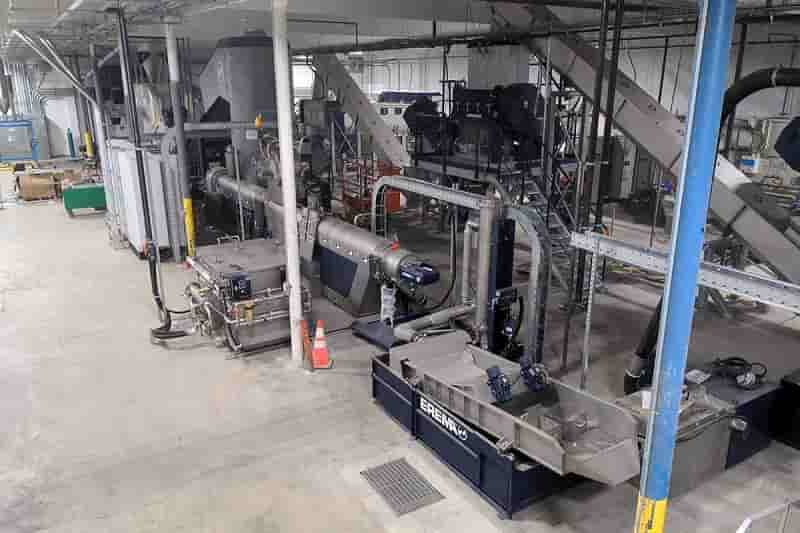 Cellulose – Bioplastics – Batteries
Cellulose – Bioplastics – Batteries
